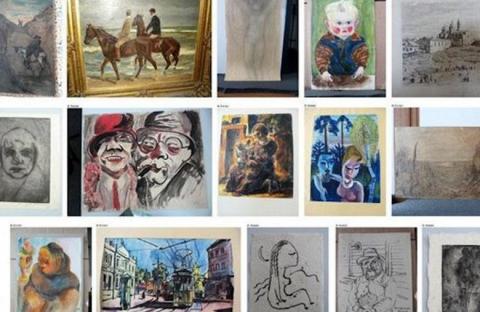Israel Museum: exhibition of arts stolen by the Nazis from the Jews
Some of the works for the Israel Museum exhibition were bought by Gurlitt for the Linz Museum in Paris through intermediate art agents, and their provenance is being checked, said the spokesperson. Some 20 other works were confiscated from German museums in 1937 as “degenerate art” or avant garde art, and were bought by Gurlitt between 1938 and 1940, in order to sell them to art collectors outside Germany for foreign currency.
The Israel Museum exhibit, whose working title is “Fateful Choices: Art from the Gurlitt Trove,” will run from September 24, 2019, to January 24, 2020. “In Israel, it needs a lot of Israeli context, and a slightly different narrative than the one we did here in Germany,” Rein Wolfs, director of the Bundeskunsthalle in Bonn, who is a member of the Israel Museum’s exhibition advisory committee, told The Times of Israel earlier this month.
An international advisory board consisting of members from Israel, Switzerland, and Germany was appointed earlier this year to assist with the academic aspects of the German exhibitions.
The 2012 discovery of the trove in the home of reclusive hoarder Cornelius Gurlitt, which included lost artworks by masters including Paul Cézanne, Claude Monet and Wassily Kandinsky, was widely celebrated but deeply tainted by the realization that the collection could include pieces that were looted or forcefully taken from families who suffered and died in Nazi concentration camps. Several works from the trove have indeed since been restituted.
The stash’s discovery made headlines around the world and revived an emotional debate about how thoroughly postwar Germany had dealt with art plundered by the Nazi regime.
When Gurlitt died, his will bequeathed the collection to a small museum in Switzerland, the Museum of Fine Arts Bern, where the first exhibit of the collection opened in November 2107. Some 500 works were left in Germany for a government task force to research the collection’s often murky origins.
But determining their provenance has been slow, and it is still not clear how many of the works had been stolen. Some 250 pieces of work from the collection were shown as part of the “Gurlitt: Status Report — An Art Dealer in Nazi Germany” exhibition in Bonn in 2017 and then Berlin in 2018, which was viewed by around 250,000 visitors. “This was a big deal for this kind of exhibition,” said Wolfs.
Besides showing paintings by masters such as Monet, Gauguin, Renoir, and Picasso, Wolfs wanted the show to clarify history, and he displayed the paintings from several perspectives, including the history of the artworks, the historical context of the collection, and the moral and ethical issues raised by its discovery.
“We were able to tell a lot of stories in some ways that were known to people but quite far away in the collective consciousness of people,” he said. “We’re dealing with history which is going back a long time, and what we wanted to show was that it’s great to be able to open these files now to tell the story.”
The importance of provenance research — figuring out who owned each of the 1,500 artworks and whether they were taken forcefully from their owners — was a centerpiece of the German exhibit. “It’s a lot of questions, and touchy questions of restitution,” said Wolfs.
Some 12 artworks from the Gurlitt collection were restituted between 2014 and 2019, and the idea of the exhibition was to give impetus to that process of restitution, said Wolfs. “Every single looted work of art which was identified during the process was one too many. And every restitution, the consequence of identifying artworks as looted art, was a success, I would say,” he said. “That’s very important here in Germany. We want to make it clear that we are changing our minds about how to get along with the past.”
When not being exhibited, the current trove of paintings are divided between Germany and Switzerland, where the provenance of each work is being researched by the Gurlitt Provenance Research Project.
“It was important for us to see ourselves as a public service,” said Wolfs. “We wanted to be open and transparent and to show the German and international public what was effectively in this Gurlitt trove and to make clear the background history, the art dealing during WWII and the Nazi period.”
Hildebrand Gurlitt was a noted museum director and an avant garde proponent of expressionism, the modernist movement that originated in Germany at the start of the 20th century. He lost two significant museum directorships in a row and became an art dealer, gradually becoming more involved in the Nazi system as it gained power, said Wolfs.
Gurlitt eventually became one of four art dealers who received assignments from the Nazis to sell modern works of art abroad, and from 1942 was assigned to buy works for the so-called special assignment, a utopian museum collection that Adolf Hitler was attempting to create.
Wolfs, a curator for the last 25 years, said the Gurlitt exhibit was the most meaningful of his career because of its confrontation with his country’s history. “We knew from the beginning that we didn’t plan on showing a mass of pieces, but wanted an exhibit that tells the story of the Gurlitt collection,” said Wolfs. “We wanted to show the way in which visual art was instrumentalized by Nazi Germany.”
Jessica Steinberg

